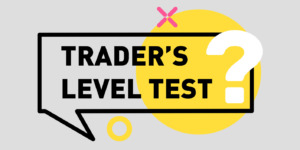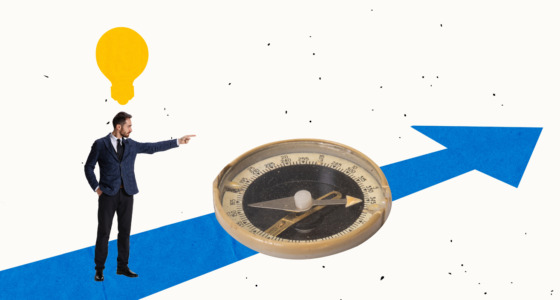

In this article, we will discuss positive pay and how it works. We will also learn about the advantages and disadvantages of positive pay and how it differs from reverse positive pay. Let’s start!
What is positive pay?
Positive pay is a name for an automatic cash-management solution that banking institutions employ to prevent check fraud. Positive pay allows banks to compare company checks with the ones they offer for payments. Suspicious checks are returned to the source for further investigation.
A company can use the system as protection against losses, fraud, and other bank obligations. Even though some banks nowadays provide the service at a discounted rate or for free, using the service usually incurs a price.
How does positive pay work?
Positive pay refers to fraud prevention services financial institutions offer their clients. It is available for clients registered in the scheme to safeguard their accounts. The system aims to guard against counterfeit, forged, and altered fake checks. It compares the check number, dates, bank details of each check submitted, and dollar amount against a listing provided by the company.
The list of checks can sometimes also have the payee. The bank only cashes the checks if these match. When banks fail to take such security measures, identity thieves and fraudsters may be able to produce fake checks that could be honored.
When the information provided and the check data don’t match, the bank sends the client an exception notice and withholds payment until the client provides the bank permission to decline or accept the check. Additionally, the bank can flag the potentially fraudulent check, inform the company, and request authorization before clearing it.
The company may also encourage the financial institution to cash the check if it discovers merely a tiny mistake or other issues. If the organization fails to mail the list to the financial institution, all their checks could be rejected, leading to financial problems.
Let’s see how the procedure goes:
- The customer signs up for the program.
- The bank receives a list of checks. It also includes dates, payees, check numbers, and amounts.
- Checks provided for exchange are verified against the client’s list by the bank.
- Verified checks are deposited and cashed.
- The elements that don’t line up are placed in a separate category.
- The bank informs the client about verifying such checks, waits for confirmation to cash them, or refuses to issue money.
Note! Banks are not responsible for fake checks, so companies must carefully evaluate their financial institution’s conditions.
Positive pay vs. Reverse positive pay
The reverse positive pay process is a variant of positive pay. This approach necessitates independent check monitoring by the issuer.
The company must notify the bank to deny a certain cheque under the reverse positive pay scheme. So, the bank notifies the company each day of all submitted checks and only approves the ones the client has authorized.
The bank will usually cash disputed checks if the company does not respond within a reasonable period. Although this approach is less consistent and efficient than positive pay, it is nonetheless more accessible.

Preventing fraud
Modern technology, such as digital wallets, revolutionizes our banking operations. Additionally, despite a decline in check usage, check fraud continues to be an occasional occurrence. According to reports, the risk of check fraud lingered by approximately 66% in 2020. Losses at the banks were estimated at a whopping $1,500 for every item. Therefore, it should not be a shock that financial scammers constantly escape detection and attempt to defraud others of their wealth.
A positive pay system and other services can help prevent fraud. Because the checks are compared against the list the company provides to the bank, they can ensure that each check has been carefully reviewed before being cashed.
Any checks found to be suspicious are held back for further review. This means that even if they are offered for processing, appropriate controls have been put in place to ensure that nothing is done without the required verification.
Positive pay fees and cost
Your connection with the bank determines positive pay costs, your banking location, the type of customer category you fit into (small company, high-net-worth retail, or large corporation), and, in certain situations, the volume of your fortune.
Some banks provide the service without a fee, while others could assess a per-use fee to their customers. In such situations, they impose a fixed price for each item they need to check. However, some banks provide it in place of a monthly charge. The number of transactions these banks will verify could be capped, or they could offer limitless positive pay offerings.
Also, the bank may charge additional fees associated with the service, including:
- Check processing fees.
- Prices for extra things (if clients go above the limit).
- Fees for matching a payee, etc.
Check with your bank to see if they charge a fee for this service.
Advantages and disadvantages of positive pay
Positive pay has advantages and disadvantages, similar to any other financial service. Therefore, you should balance the advantages and disadvantages and make sure it is the best choice.
Advantages
Positive pay enrollment and inclusion can offer another layer of financial account security for individuals and companies. Although many banks try to avoid forgery, there could be occasions where erroneous checks slip through the gaps. These kinds of services can mitigate, if not eliminate, check fraud.
Positive pay has the potential to defend against fraud connected to ACH debit card transactions and conventional paper checks. Banks may provide these services individually or as part of a package.
Customers may regain ownership of their accounts and finances by signing up for positive pay. This prevents a foreign entity (the bank) from seizing authority and cashing checks that either you or your company did not write — significantly lowering the likelihood of losses.
Disadvantages
This might be laborious and result in pointless paperwork. You must make a list to submit to the bank.
Also, you should be in touch if the bank contacts you to check questionable checks. Most banks give their customers a certain amount of time to respond. The bank may cash or reject the check if you do not respond quickly. This may go against your plans.
FAQs
Below are answers to a few frequently asked questions about positive pay.
How does positive pay operate?
Banks offer their customers the positive pay service as a fraud protection measure. It aids in the eradication of damages brought on by fake checks.
Checks submitted for payments are compared and cross-referenced with a client-provided list containing the check number, sum, account number, and date. The payee could also be specified in some circumstances. Any inconsistencies with the provided list, which contacts the client.
What is a positive pay file?
A company that writes checks against its accounts throughout a specific period keeps a detailed record of those checks within a positive pay file. When a company enrolls in the positive pay program, this list is sent to the bank to stop and avoid check fraud.
How expensive is the positive pay service?
While some banks make it mandatory for customers to pay monthly fees, certain banks provide the service at no cost. Moreover, some of them also provide service on a per-use basis, which can result in you being charged for every verified check. There can be additional charges, such as a payee match fee.
The bottom line
Check fraud remains dangerous to companies even though utilization is declining. However, there are steps you may take to secure your account. Banks may warn you about the likelihood of counterfeit checks when they clear your account by using services such as positive pay. Once you sign up, your bank will request a checklist of the checks you write to process the ones included in the list and freeze or decline the ones that aren’t.
Verifying with the bank before signing up is a great idea since you might have to pay a specific fee to use the service. Nevertheless, paying a small amount of cash to use this service is much better than going through the trouble of check fraud and suffering significant losses.










